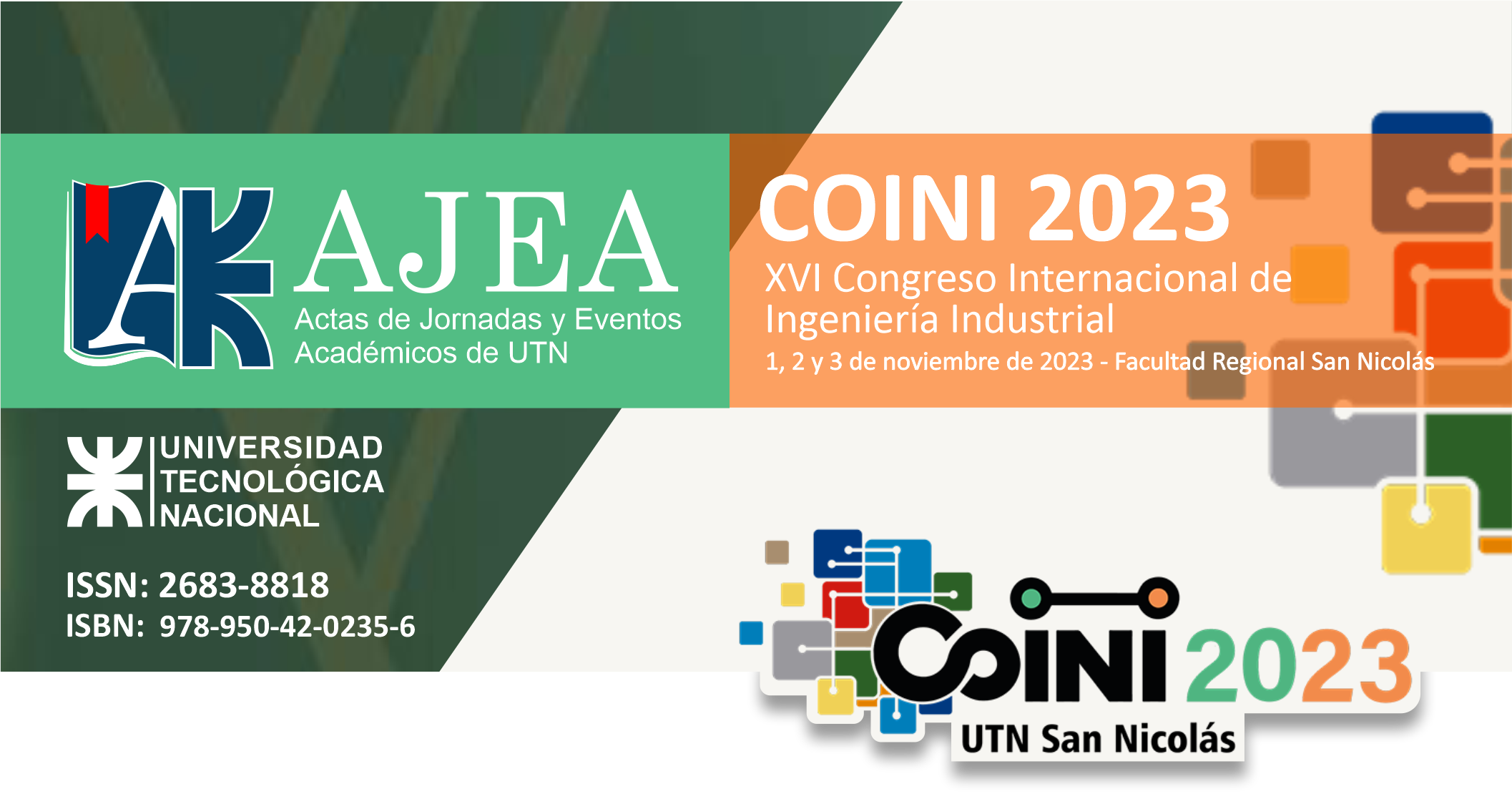SIMULATION OF INCOME AND EXPENSES OF EMPLOYEES IN A FACTORY
Keywords:
Simulation, Anylogic, Process Improvement, Access Control, BottlenecksAbstract
The purpose of this work is to analyze, through a hybrid simulation model (Discrete Events and Agent-Based Models), the dynamics of the pedestrian behavior of the employees of an important suburban factory located in Buenos Aires Province, Argentina, in order to evaluate the indicators of interest (KPIs) such as the average waiting time and the average lengths of the different waiting lines, as well the internal distribution to the different sectors of the factory. The simulation model allows tests of different access opening alternatives, the number of security personnel to control the entry and exit of employees and external visitors, evaluating the performance of each alternative. Due to the large number of employees in the factory, the simulation model also allows testing different access times in the different work shifts. By using the vertical libraries of the Anylogic simulation software, it was possible to determine the number of accesses and adequate security personnel that would allow achieving access times and waiting lines according to what was desired, significantly reducing the cost of security personnel. By enabling new accesses for entry and control, depending on the dimensions (number of possible turnstiles per available space), it was necessary to simulate different scenarios considering a prior analysis of user demand at different peak times for entry and exit to the factory. The coincidence of income and expenses was also key when evaluating the bottlenecks of the turnstiles. The model was validated against the current entry and exit situation and later used to improve the situation with new access strategies, schedules, and security personnel to support and control employees. The combination of statistical analysis tools and the simulator allowed to evaluate the saturation of the system and the access delays.
Downloads
Downloads
Published
How to Cite
Conference Proceedings Volume
Section
License
Copyright (c) 2024 Nahuel Romera, Andrés Caminos

This work is licensed under a Creative Commons Attribution-NonCommercial 4.0 International License.










